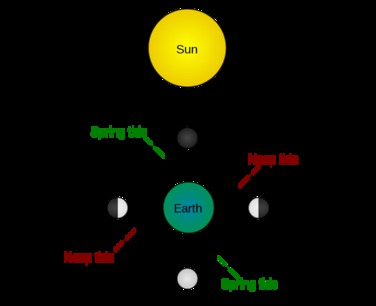It's unusual for an inner planet of our solar system to have moons. Mercury and Venus have none and Mars has only two tiny ones, which might only be captured asteroids. Earth, on the other hand, has one of the largest moons in our solar system.
The influence of a large moon on Earth is profound. The gravitational tug of war between the two bodies pulls on Earth's oceans and creates the tides. The moon's gravitational pull is stronger on the side of Earth that's closest to it, and this causes the oceans to bulge in the direction of the moon. Another bulge is formed on the opposite side, in part, because Earth gets pulled toward the moon more than that ocean does.
As Earth rotates through its day, the bulges in the ocean remain in the same position relative to the moon and cause the high and low tides around the globe. You may be sitting on the shore and think you're watching the tide come in, but in fact your beach is slowly coming into the bulge.
But however you look at it, without the moon, there would be no tides.
